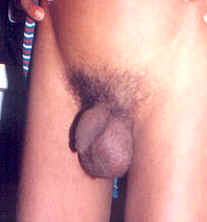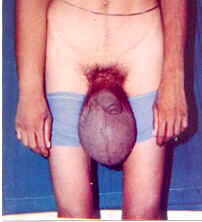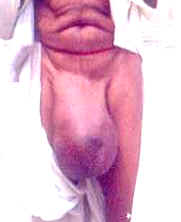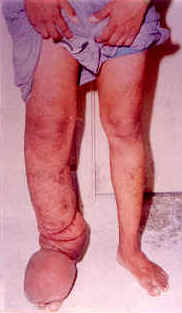|
Filariasis is a
mosquito borne disease. The
microfilariae sucked up by mosquito from infected man develop to infective
larvae in 10-14 days. Mosquito harbouring infective stage larvae bite
and infect a fresh host (man). Larvae migrate |
Chronic manifestationsMajor chronic clinical manifestations are hydrocele, lymphoedema and elephantiasis. While hydrocele is the commonest genital manifestation in the male population, chronic epididymitis, funiculitis and lymphomatous thickening of scrotal skin can be the other genital manifestations.Lymphoedema commonly affects the lower limbs, some times the hands, and rarely the genitals and breast in females . There may be repeated attacks of ADL. Lymphoedema progresses from pitting oedema (reversible on elevation) and then non-pitting oedema followed by increase in oedema fluid volume, resulting in fibrous tissue formation, followed by skin thickening, ulceration, nodule formation and disfiguration (elephantiasis). Chyluria is prevalent in some endemic areas.
|
||
|
|
|||
|
Bilateral
vaginal
hydrocele
Grade
I
|
Bilateral
vaginal hydrocele
|
||
|
Hydrocele
Grade III |
Lymphoedema Grade I |
||
|
Lymphoedema Grade |
Elephantiasis |
||





